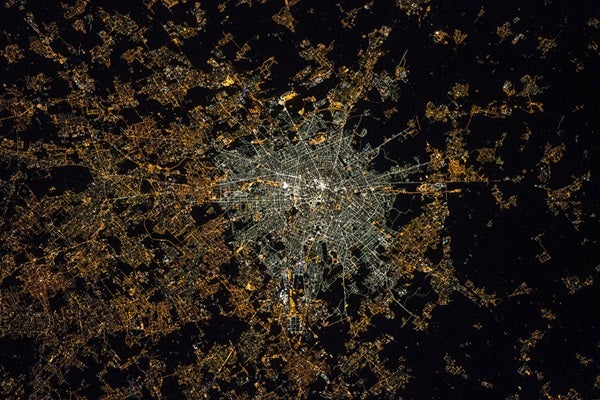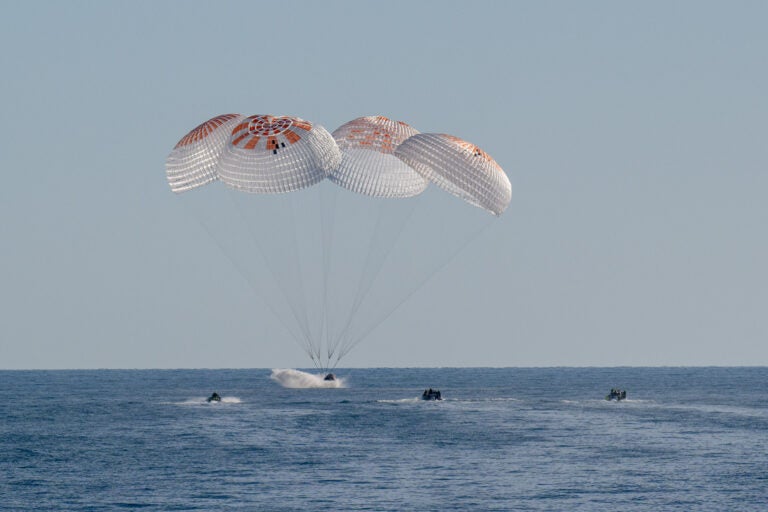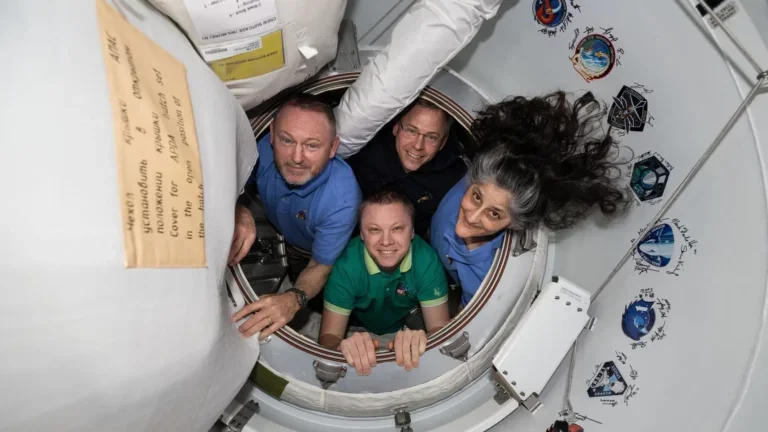In a remarkable new study, scientists from the Universidad Complutense de Madrid, Spain and the Cégep de Sherbrooke in Canada, together with members of the public, have worked on a project called Cities at Night. The aim is to produce a global color map of the Earth at night from pictures taken by astronauts on the International Space Station using a standard digital camera.
Starting in July 2014, this huge project required the cataloging of over 130,000 images — the ISS’s entire high-resolution archive — and geo-referencing them to place them on a map. The images were also calibrated using the stars in the background sky over the ISS, as well as ground-based measurements of the night sky brightness.
Previously, light pollution measurements had to be done in situ and would contribute only a single measurement to the light pollution map. This new method, connecting space-based measurements of light pollution with ground-based night sky brightness measurements, makes it possible for the first time to map light pollution reliably over extended areas.
A diffuse light present around cities, in addition to the familiar bright lights from streets and factories, was previously detected by the Defense Meteorological Satellite Program, but its nature remained unknown; the satellite’s low-resolution cameras could not distinguish it from other instrumental factors. However, the high-resolution images captured by the astronauts — in addition to an extensive sky brightness survey conducted around Madrid — have now allowed scientists to observe the direct relationship between the diffuse light observed and light pollution from artificial lights.
Using the ISS astronaut images, as well as data from the Defense Meteorological Satellite Program and the Suomi National Polar-orbiting Partnership Satellite, the researchers also discovered that European countries and cities that have a higher public debt also have a higher energy consumption of street lighting per inhabitant. The total cost of the energy consumption for streetlights is estimated by the study to be 6,300 million euros per year in the European Union. The different ways of calculating streetlight energy costs across Europe previously made such an estimate impossible.
This citizen-science project is vital for researchers from many scientific fields. Studying lighting technology from orbit is currently of even greater importance now than before due to massive transitions to LED technology. The ISS is the only place from which it is possible to estimate the prevalence of the different types of lighting technologies used in cities around the world and to measure the impact of light pollution on the environment and human health.
“Until the advent of new satellites, astronaut photography was our only color and high-resolution window on the Earth,” said lead scientist Alejandro Sánchez de Miguel.
After gaining the initial support of multiple institutions and thousands of volunteers, the next phase of the Cities at Night project aims to gather funding to keep the project running so it can extend its color map of the night side of Earth.










